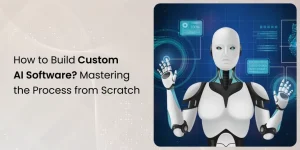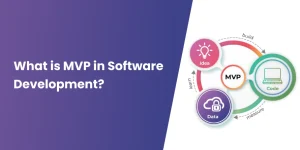Trends in Software Development You Need to Know
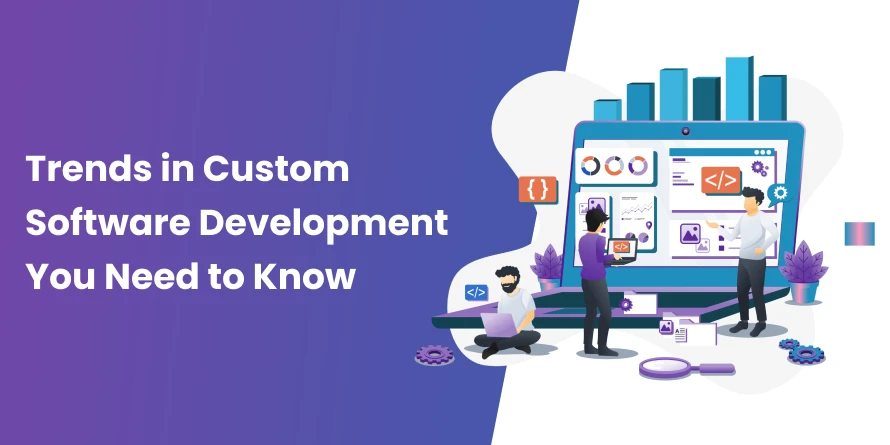
Software development is entering a new era of growth and innovation. The global software development market is projected to reach $862.67 billion by 2030. As technology advances and consumer expectations evolve, businesses must be ready to adapt.
As we move into 2025, organizations must embrace the modern technologies and strategies that will define the future of custom software, from the integration of novel technologies such as AI and ML to blockchain technology to cloud computing to Web 3.0, staying competitive means adapting to the latest trends in software development.
To help you navigate the year ahead, we’ve rounded up the top trends in software development set to make an impact in the years to come.
Why It’s Important to Consider Custom Software Development Trends?
Keeping an eye on industry trends ensures you’re not just solving today’s problems but building adaptable systems that scale with your business and technology shifts. Here’s why it matters:
Stay Competitive in a Rapidly Evolving Market
- According to Gartner, 63% of organizations plan to increase investments in custom software development in 2025.
- Businesses that adopt AI, edge computing, and low-code platforms gain faster go-to-market times and stronger ROI.
Ensure Scalability and Tech Longevity
- Trends help identify which tech stacks and architectures (e.g., microservices, serverless) are becoming industry standards.
- Early adoption avoids cost reviews and tech debt accumulation later on.
Enhance User Experience and Personalization
- Features like conversational UI, predictive analytics, and adaptive interfaces are becoming baseline expectations.
- Keeping up with trends ensures your software meets modern UX benchmarks and delivers measurable value.
Improve Security and Compliance
- With rising threats and regulatory pressure (e.g., GDPR, HIPAA), following trends like DevSecOps or AI-driven threat detection is critical to stay secure and compliant.
Enable Seamless Integration with Emerging Technologies
- Custom software must integrate with IoT, blockchain, AI agents, or AR/VR in many industries.
- Ignoring trends could result in outdated architectures that are costly to retrofit.
Top 11 Software Development Trends For 2025
As we’re heading down the path of digital transformation, your business needs to stay abreast of the latest trends in software development. Following is the list of trends in software development we will be discussing that have brought a radical shift, and will turn the business operations upside down.
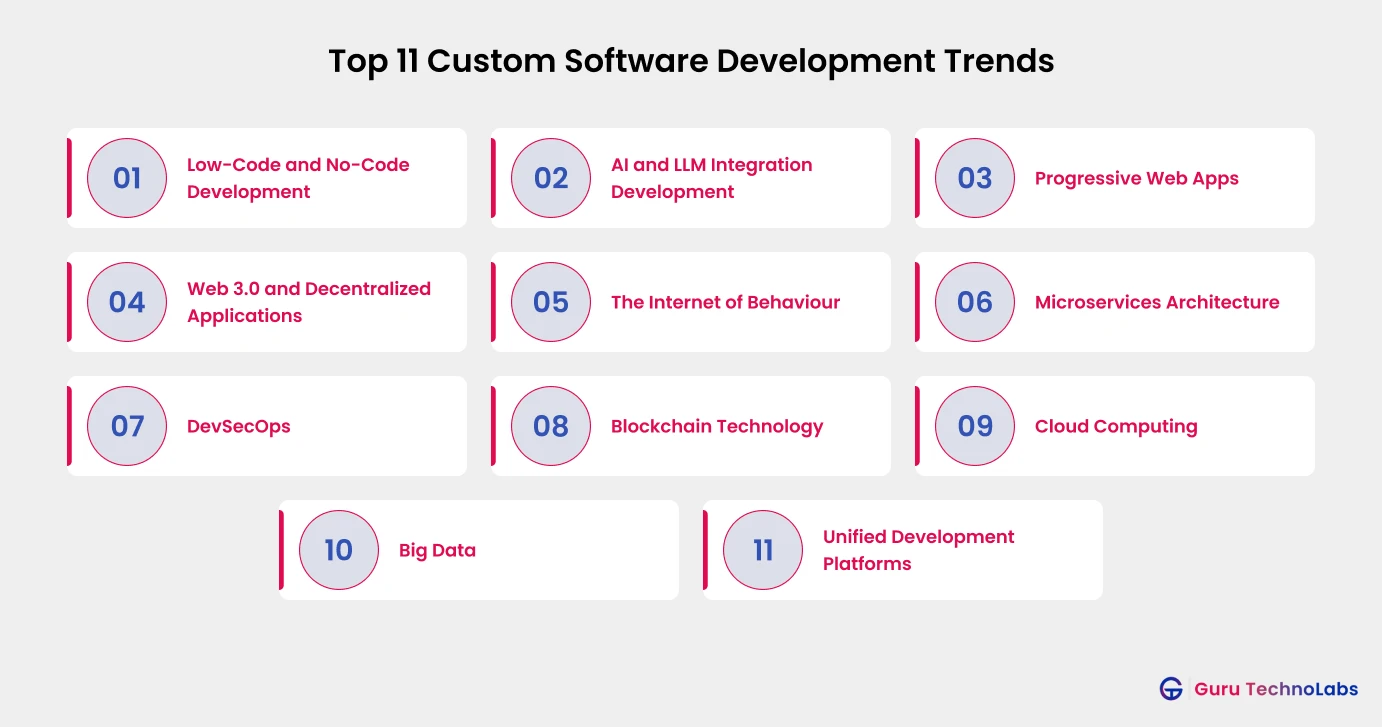
1. Low-Code and No-Code Development
Low-code and no-code platforms are redefining the custom software landscape by allowing non-developers and business users to contribute directly to application creation.
With visual interfaces, drag-and-drop functionality, and reusable components, teams can rapidly build prototypes and deploy internal tools without writing thousands of lines of code.
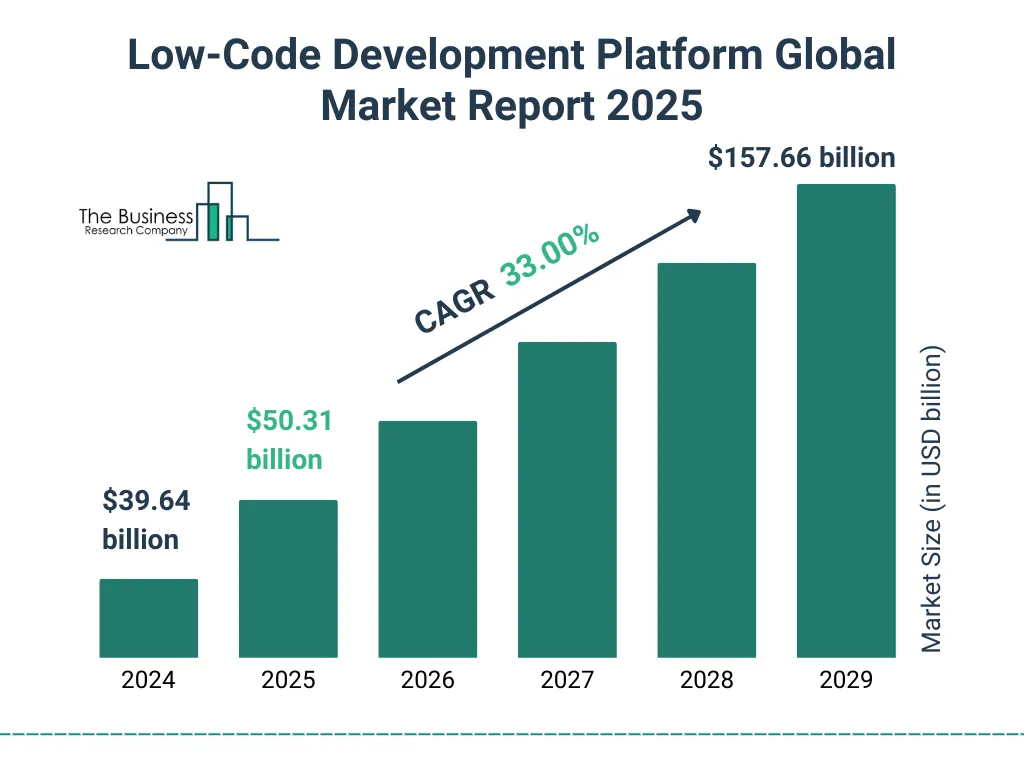
Source: The Business Research Company
According to Forrester, the low-code market is anticipated to hit $50 billion by 2028, driven by the need for agility and IT democratization.
Companies like GlaxoSmithKline and Unilever have leveraged low-code platforms like Mendix and OutSystems to reduce app development timeline by over 50%, empowering business teams to drive transformation without overburdening IT departments.
2. AI and LLM Integration Development
Artificial Intelligence (AI) and large language models (LLMs) are no longer optional add-ons, they are becoming integral to modern custom software solutions. From an AI-powered code assistant like GitHub Copilot to LLM-driven chatbots and predictive engines, AI is streamlining development, debugging, and deployment processes.
An example is Shopify, which recently introduced AI tools that help merchants automatically generate product descriptions, saving time and boosting SEO performance.
Additionally, an IBM study found that integrating AI in development improves release cycles by up to 30% while reducing bugs and regressions significantly, showing AI’s potential to reduce cost and increase code quality simultaneously.
3. Progressive Web Apps (PWA)
Progressive Web Apps offer the best of both the web and mobile worlds- blazing fast performance, offline capability, and a native-like user experience.
They’re especially game-changing for startups and mid-sized businesses looking to cut down on native app development costs while reaching a broader audience.
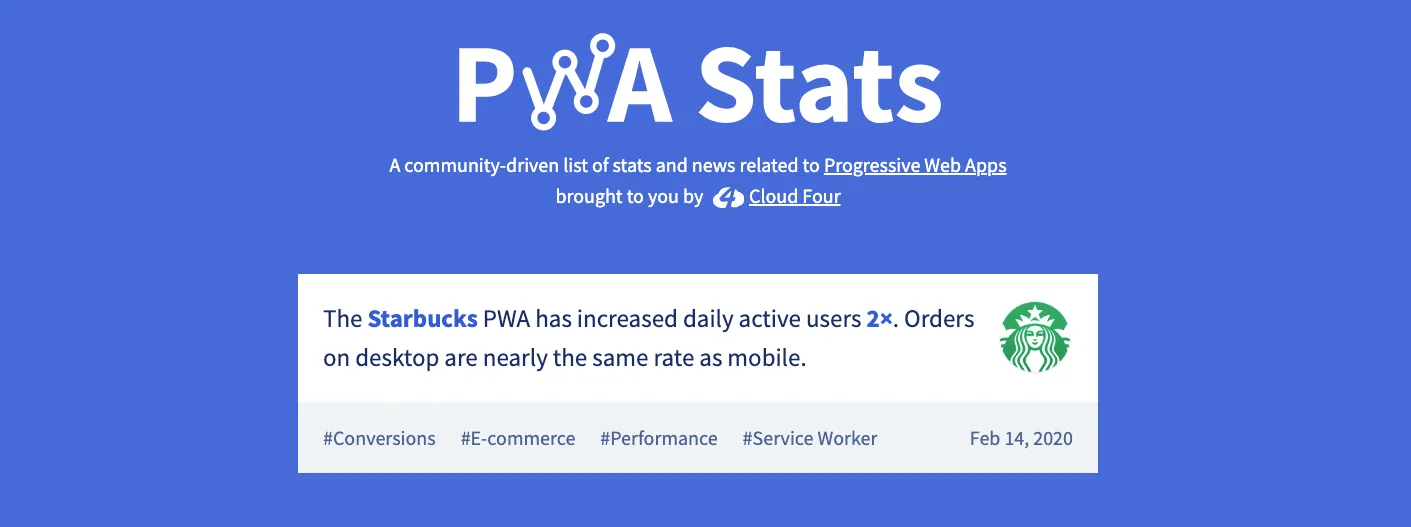
Source: PWA Stats
A standout example is Starbucks, whose PWA saw a 2X increase in daily active users compared to its previous mobile app. It also continues to collect significantly less data, making it ideal for emerging markets.
PWAs are increasingly seen as the go-to solution for scalable, high-performance digital experiences across devices, without the app store dependency.
4. Web 3.0 and Decentralized Applications (dApps)
Web 3.0 is reshaping the custom software development narrative by shifting control from decentralized platforms to decentralized networks, with technologies like blockchain, smart contracts, and distributed storage.
This opens up new development paradigms focused on transparency, data ownership, and trustless interaction.
For instance, Audius, a decentralized music platform built on blockchain, empowers artists to publish directly to listeners without intermediaries, changing the dynamics of digital content monetization.
According to Statista, blockchain tech in software development is expected to surpass $94 billion in global spending by 2027, signaling that Web 3.0 is not a trend—it’s an emerging standard for digital infrastructure.
5. The Internet of Behaviour (IoB)
The Internet of Behaviour (IoB) is the interaction of data, technology, and psychology. It involves collecting and analyzing behavioural data from various touchpoints, such as wearables, smart devices, and social media, to influence consumer behavior.
For instance, Spotify uses IoB to listen to habits, predict preferences, and deliver personalized playlists. These behavioural insights not only enhance user experience but also fuel marketing strategies and product development.
As businesses continue to gather more user data, software integrating IoB capabilities is becoming essential for personalization and decision-making.
6. Microservices Architecture
Microservices architecture breaks down software applications into small, independent services that can be deployed, developed, and scaled individually. This is a stark contrast to monolithic systems that are rigid and harder to maintain.
Microservices vs. Monolithic Architecture
- Independent service deployment
- Easier scalability
- Fault isolation
- Technology diversity
Microservices empower businesses to be agile and responsive. For instance, Netflix transitioned to a microservices architecture to handle its massive user base and streaming data efficiently.
7. DevSecOps
As cybersecurity threats escalate, DevSecOps – a widely adopted software development method that integrates security from the very start of the life cycle – is gaining momentum. Instead of treating security as a final checkpoint, DevSecOps embeds it into the CI/CD pipeline.
According to Gartner, by 2025, more than 60% of organizations will integrate security teams into their DevOps processes, up from 27% in 2022.
This approach reduces vulnerabilities, accelerates delivery times, and builds trust in custom-built solutions – especially in finance, healthcare , and eCommerce sectors.
8. Blockchain Technology
Beyond cryptocurrencies, blockchain is being adopted in custom software for its unmatched transparency, traceability, and security. Industries such as supply chain, healthcare, and real estate are leveraging blockchain to build immutable records and eliminate fraud.
For instance, Walmart uses blockchain to trace food products through its supply chain, ensuring quality and preventing contamination tracking from days to seconds.
Incorporating blockchain into custom solutions allows for decentralized applications (dApps), smart contracts, and secure transactions, offering a competitive edge in regulated industries.
9. Cloud Computing
The pandemic acted as a wake-up call for organizations relying on traditional, on-premise data management systems. Many businesses found themselves ill-equipped to retrieve or process information efficiently, particularly in remote or distributed environments.
This disruption underscored the urgent need for a more agile, scalable, and accessible infrastructure, driving the widespread adoption of cloud computing.
Cloud architecture enables companies to shift from hardware-dependent operations to on-demand digital ecosystems. What makes cloud computing especially appealing is its cost-effectiveness. Unlike legacy systems that require upfront investment in servers and ongoing maintenance, cloud services follow a pay-as-you-go model.
A recent study reports that 95% of enterprises are either already leveraging cloud computing or planning to adopt it, primarily to enhance their operational agility, automate workflows, and minimize infrastructure costs.
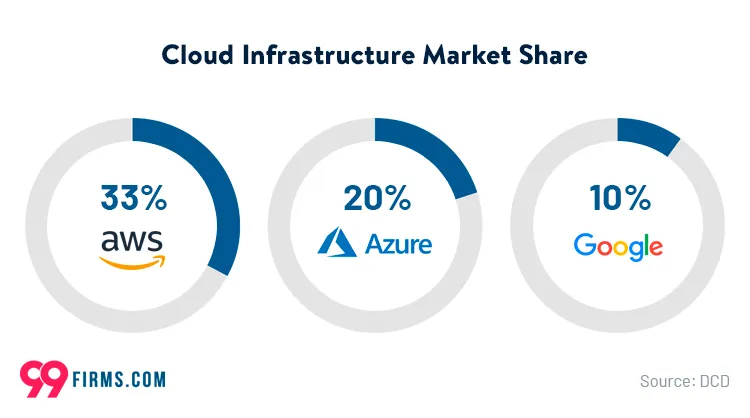
Source: 99 firms
Prominent cloud platforms such as Amazon Web Services (AWS), Google Cloud Platform (GCP), Microsoft Azure, and IBM Cloud have become integral to modern software ecosystems.
Take Amazon Web Services, for example. Companies across industries use AWS to deploy scalable websites, build mobile apps, integrate AI services, and expand their storage limits effortlessly. Its reliability and global reach have made it a go-to choice for startups and Fortune 500s alike.
Also Read: Cloud Computing in Healthcare Industry
10. Big Data
In the age of digital acceleration, businesses are generating data at unprecedented rates – from customer transactions and user behaviour to sensor readings and social media activity. But the real value doesn’t lie in data volume – it lies in how organizations harness that data to drive decision-making, optimize processes, and anticipate future trends.
Big Data refers to the vast and complex data sets that traditional processing systems cannot manage efficiently. Custom software equipped with Big Data Analytics can extract actionable insights from this sea of information, helping businesses to not only understand what is happening, but also why it’s happening, and what to do next.
What sets Big Data apart is its three key characteristics, often referred to as the 3 Vs:
| V | Description |
|---|---|
| Volume | Terabytes or petabytes of structured and unstructured data |
| Velocity | Real-time or near-real-time data processing |
| Variety | Diverse data sources – from IoT devices to web logs to CRM Tools |
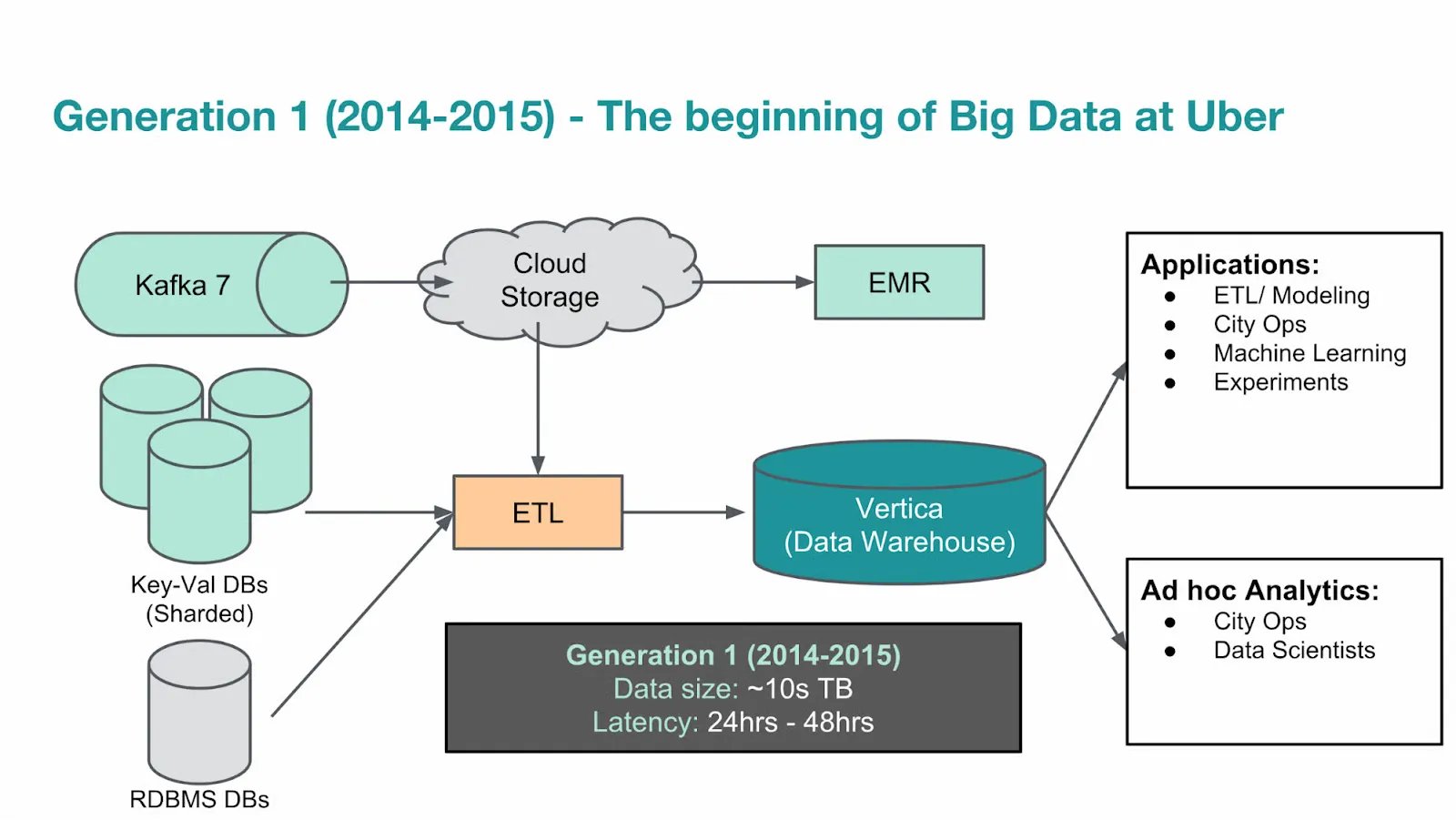
Source: Uber
For instance, Uber relies heavily on Big Data to dynamically set pricing, match riders with drivers, and forecast demand based on time and location. Similarly, in healthcare, Big Data enables predictive diagnostics and real-time patient monitoring, improving outcomes and reducing costs.
Big Data is no longer just a technical term; it’s a fundamental pillar for business intelligence and growth in a highly competitive digital environment.
11. Unified Development Platforms
As software development becomes more collaborative, distributed, and continues, the traditional silos between developers, testers, DevOps engineers, and project managers are becoming a bottleneck.
To overcome this, businesses are increasingly turning to unified development platforms – tools that centralize every phase of the development lifecycle into a single, streamlined environment.
Examples include GitHub, GitLab, Microsoft Power Platform, and Atlassian’s Jira + Bitbucket combo.
Key benefits of unified development platforms are:
- Faster time to market through automated testing and deployment
- Seamless team collaboration regardless of geography
- Integrated security and compliance monitoring
- Reduced operational overhead and tool fragmentation
In a time where remote work and hybrid teams are the norm, unified platforms are vital for maintaining consistency, traceability, and accountability throughout the software development process. They also enhance governance, especially when building regulated or enterprise-grade custom solutions.
Ready to Build the Future?
As we’ve explored in the latest trends in custom software development, the industry is evolving rapidly, driven by innovation and technological breakthroughs. Each trend opens the door to new opportunities for businesses to grow, scale, and stay competitive.
From AI integration to cloud-based solutions, the custom software technologies making waves in 2025 are set to shape the digital landscape for years to come.
If you’re looking to enhance your operations or bring a new idea to life, our custom software development services are tailored to meet your specific needs. Whether it’s building cloud-native applications or modernizing existing systems, our team is here to help.
So what are you waiting for? Contact us, and we will help you shape your business the way you want.
Frequently Asked Questions
Custom software development is the process of designing and developing software specifically tailored to a company’s unique requirements.
Key trends include low-code/ no-code frameworks, cloud computing, microservices, Big Data, DevSecOps, Blockchain, IoB, and unified development platforms.
Cloud offers scalability, cost savings, and remote accessibility with a flexible pay-as-you-go model.
It helps uncover insights from large datasets, enabling better decisions and personalized user experiences.
AI is used for automation, predictive analytics, and enhancing user interactions in software solutions.
Custom software development costs vary based on complexity, tech stack, and team, ranging from $10,000 to $500,000+.
IoB analyzes user behavior to help create a more personalized and intuitive software experience.






